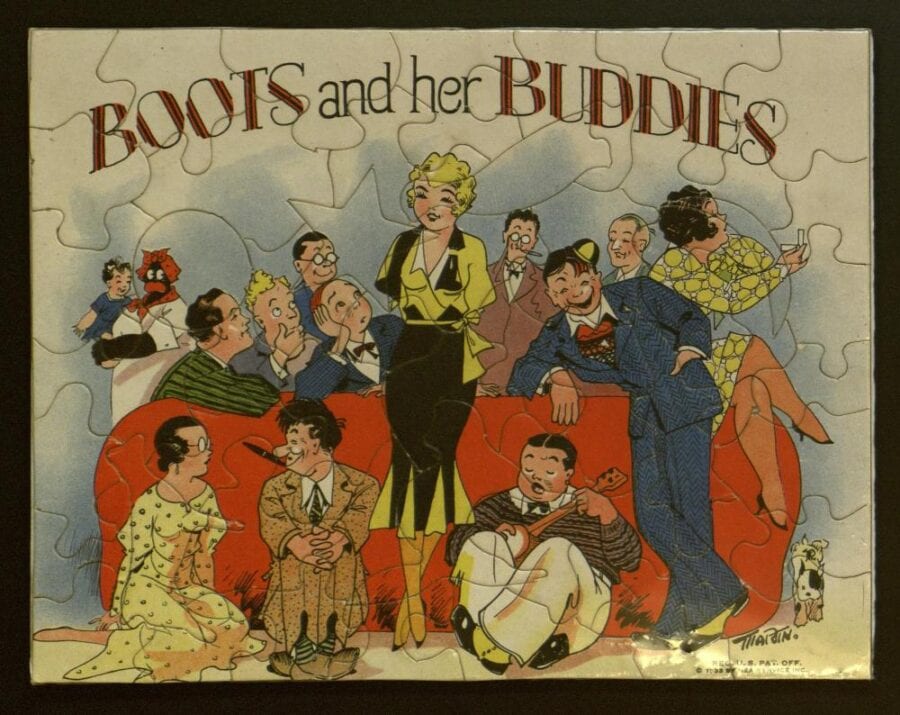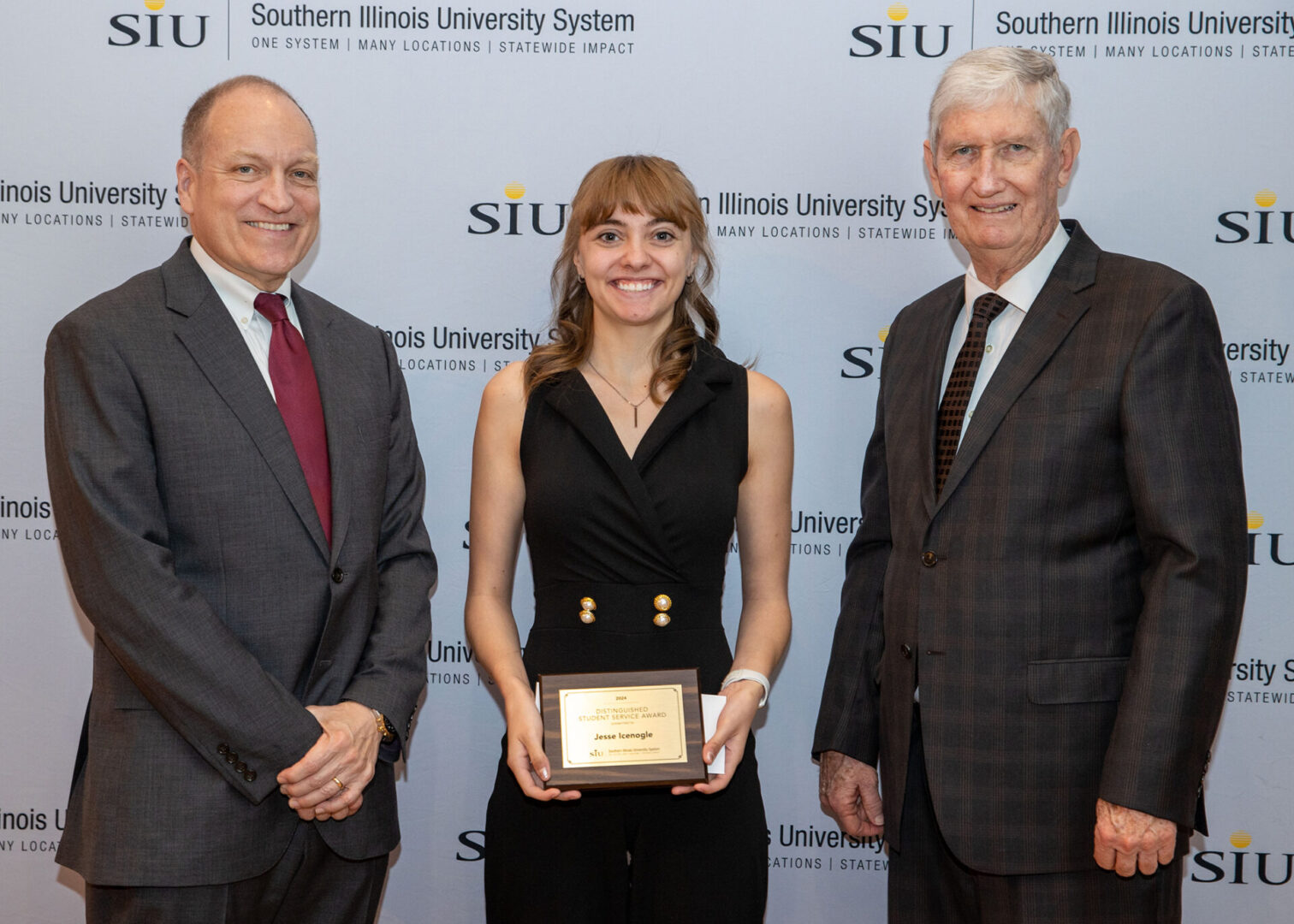BOOTS AND HER BUDDIES
It may seem improbable, but one of America’s first major pop culture icons was created in 1924 by the son of a Monmouth College biology professor. It was in that year that a fashionable young blonde named Boots made her debut in the newspaper comics pages nationwide.
Known as “Sweetheart of America,” Boots would instantly capture the hearts of high school and college students, and a strip called “Boots and Her Buddies” would be a favorite for nearly four decades. It also drew inspiration from the Monmouth community and occasionally contained visual references to the town and college. Its popularity would inspire comic books and even a Whitman mystery novel.
The creator of Boots was Edgar Everett “Abe” Martin, who was born in Indianapolis in 1898. As a child, Abe and his family moved to Tennessee, where his father, George, took a teaching job in the biology department of Vanderbilt University. The family lived on his farm, and while young Abe dutifully did his chores, his father was disappointed that he didn’t take an interest in the rich biological life around him.
George wanted his son to become a doctor, lawyer or preacher, so he sent Abe to a preparatory school at Nashville. After Abe’s graduation in 1916, the family moved to Monmouth, where George became a professor at the college and Abe enrolled as a freshman.
One night in Abe’s junior year, Professor Martin asked him to help prepare some charts for a class, and inadvertently chose his son’s profession. Abe drew a salamander, a frog and a grasshopper and amazed his father with their realism. Before the end of that semester, Abe left for the Academy of Fine Arts in Chicago. Six months later, a cartoon syndicate called the Newspaper Enterprise Association invited him to its Cleveland, Ohio, headquarters to discuss becoming a staff cartoonist.
Abe Martin signed with the NEA in 1921 and experimented with several strips, none of which achieved popularity. The following year, he married college classmate Margery Armsby, the daughter of a Monmouth farmer, and the couple settled in Cleveland.
In 1924, when NEA put out a call for a new strip featuring a girl, Martin submitted an unsigned sample cartoon, which was chosen out of all the entries. “How soon can we get this artist?” asked one of the NEA judges. “In about one minute,” was the reply. “He works here.”
Thus, Boots was born. She was a college student who roomed with a friend named and a cast of “buddies”—mostly suitors. One of their hangouts was Sandy Mitchell’s Pool Hall, based on the real billiards parlor in Monmouth’s Grand Cigar Store, which preceded the former Woolworth’s building on South Main Street.
In the midst of the flapper era, Boots was an old-fashioned girl who remained chaste. In 1926, however, she took a risqué step when her brother took her to New York to be in the Easter Parade. There she received a new haircut that became known as the “Boots Bob” and was popular in several cities. It was also the beginning of Boots becoming a trendsetter, as Martin started studying fashion magazines and attending fashion shows to portray her in the latest popular styles.
In 1936, Monmouth College students asked Martin to pick a coed beauty who most resembled Boots to be Homecoming queen. The winner was introduced on WHBF Radio and was presented at a musical show on the stage of Monmouth’s Rivoli Theatre. This started a tradition for Martin, which included picking beauty queens for several colleges and universities. In 1939, Boots was the honored guest, in sketch form, at the Yale Junior Prom.
Not only a trendsetter, Boots was a fearless, modern woman, learning to pilot a plane and becoming a world traveler. Although she seemed destined to perpetually remain a single college student, she followed the example of comic strip contemporary Blondie—drawn by Martin’s art school chum, Chic Young—and was finally married at the close of World War II.
Boots and her husband, Rod Ruggles, became the parents of a baby boy on July 4, 1946. Fans submitted suggestions for names and Martin picked the one most popular, David. Because Martin in real life was the father of only three daughters, he took a special interest in the young boy. A spirited little girl named Pug, who had been introduced in 1939, also joined the Ruggles household, and became almost as popular as Boots.
Martin had long enjoyed vacationing in Florida, and in 1940 moved his family from Cleveland to Clearwater. After the death of his father-in-law, the Martins often visited Margery’s mother in Monmouth, and eventually assumed ownership of her home at 305 North Second Street.
Martin’s daughter Mary married Thomas Harris, an English professor and associate dean at the University of Missouri, who during the 1950s began scripting the Boots strip, with Martin writing the final dialog.
Martin died in 1960 at the age of 62, and his daily strip was discontinued that October. His Sunday strip, drawn by an assistant, continued until 1968.
For Maple City Memories, I’m Jeff Rankin.














